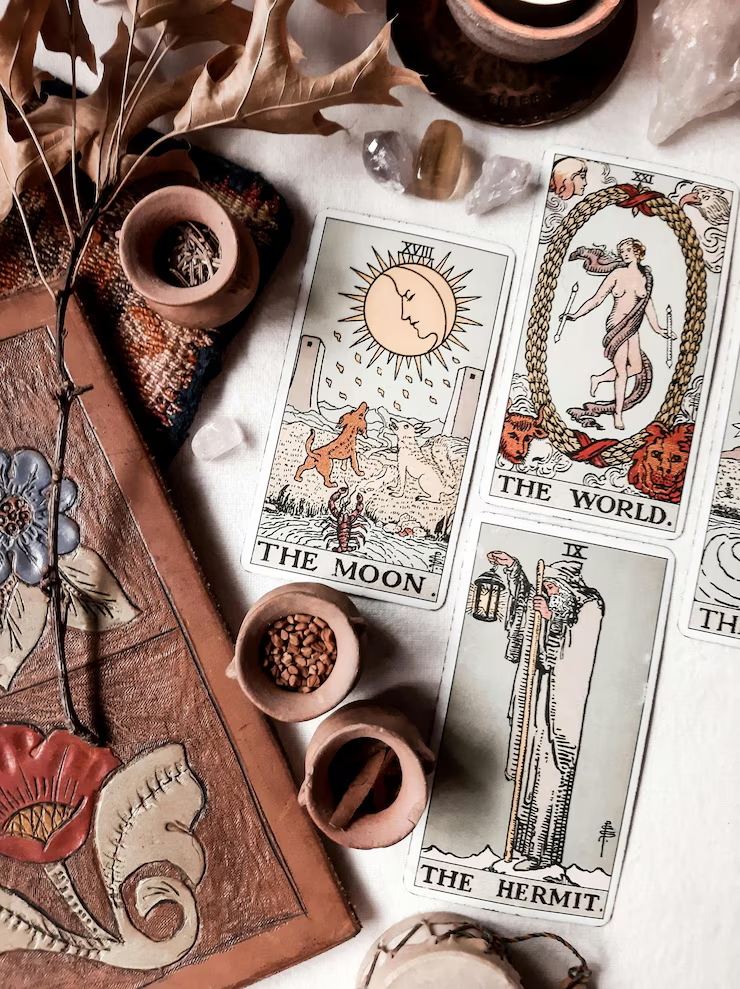Bridging the Past and Present
Tarot fortune telling has captivated humanity for centuries, serving as a tool for introspection, guidance, and spiritual connection. Rooted in symbolism and intuition, Tarot readings interpret the stories woven into 78 unique cards to uncover insights about life, relationships, and personal growth. While some seek it for entertainment, others view it as a profound metaphysical practice. For those curious to explore its mysteries, platforms like free fortune reading offer accessible introductions to this ancient art. This article delves into Tarot’s history, mechanics, and contemporary relevance.
The Origins and Evolution of Tarot
Tarot cards first emerged in 15th-century Europe as playing cards, known as «tarocchi» in Italy. The earliest decks, like the Visconti-Sforza, featured elaborate artwork for aristocratic games. By the late 18th century, occultists such as Antoine Court de Gébelin linked Tarot to Egyptian mysticism, transforming it into a divinatory tool. The Rider-Waite-Smith deck, created in 1909, popularized symbolic imagery still used today. Modern Tarot blends tradition with diverse cultural interpretations, adapting to new spiritual and psychological frameworks.
How Tarot Fortune Telling Works
A Tarot reading hinges on the reader’s intuition and the seeker’s energy. The deck is shuffled and cards are drawn in spreads—layouts that assign meaning based on position. Each card’s imagery, numerology, and elemental associations (e.g., Cups for water, emotions) inform interpretations. Readers synthesize these elements to address questions or reveal subconscious patterns. While skeptics attribute accuracy to the Barnum effect, enthusiasts believe Tarot taps into universal archetypes and synchronicity.
Understanding the Major and Minor Arcana
The Tarot deck comprises two sections: the Major Arcana (22 cards) and Minor Arcana (56 cards). The Major Arcana, including cards like The Fool and The World, symbolize life’s karmic lessons and transformative journeys. The Minor Arcana, divided into four suits (Cups, Wands, Swords, Pentacles), reflect everyday challenges and emotions. Court cards (Page, Knight, Queen, King) often represent people or personality traits. Together, they create a narrative mirroring the seeker’s experiences.
Popular Tarot Spreads and Their Meanings
Spreads structure a reading’s focus. The Celtic Cross, a 10-card layout, examines past influences, present dynamics, and potential outcomes. The Three-Card Spread offers concise insights into past-present-future or mind-body-spirit connections. Relationship readings might use the Horseshoe Spread (7 cards) to analyze partnership dynamics. Simpler spreads, like a single-card daily draw, provide focused reflection. The choice of spread depends on the query’s complexity and the reader’s style.
Ethical Considerations in Tarot Reading
Responsible Tarot practitioners prioritize empowerment over fatalism. Ethical guidelines include avoiding fear-based predictions (e.g., death, illness), maintaining confidentiality, and encouraging seekers to take ownership of their choices. Readers often clarify that Tarot reveals possibilities, not certainties, and should never replace professional medical or legal advice. Transparency about the reader’s limitations and the seeker’s consent are foundational to ethical practice.
How to Prepare for a Tarot Session
Approaching a Tarot session with openness enhances its value. Seekers should reflect on their questions—whether specific (“What steps can I take toward career growth?”) or general (“What do I need to focus on now?”). Clearing distractions, meditating, or setting an intention can deepen the experience. Choosing a reader whose style resonates (predictive vs. introspective) is equally important. Platforms like Ysoul.com offer tailored sessions for newcomers and seasoned enthusiasts alike.
Exploring Tarot in the Modern Age
Today, Tarot thrives in digital and globalized forms. Mobile apps generate instant readings, while social media communities share interpretations and art. Psychological approaches, like Jungian analysis, frame Tarot as a tool for accessing the collective unconscious. Meanwhile, inclusive decks celebrate diversity in gender, culture, and spirituality. Whether through a free fortune reading online or an in-depth workshop, Tarot remains a dynamic bridge between intuition and self-discovery.
